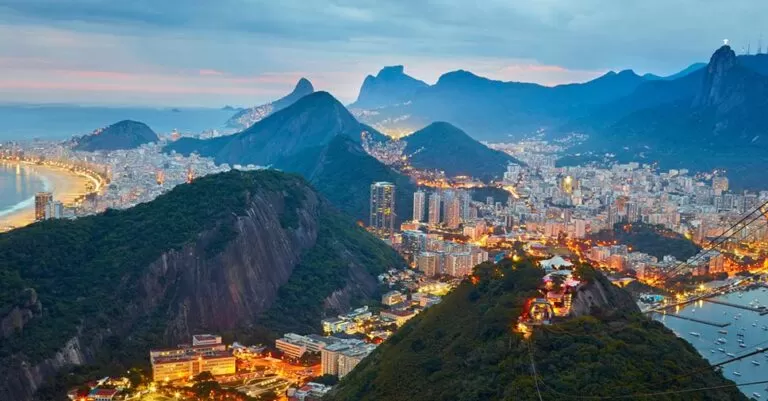Interesting facts about Rio de Janeiro

For many people, Rio de Janeiro equals heat, beach and samba. However, Rio goes beyond parties. There are many interesting facts about the second most populous city in Brazil that are unknown among the majority of tourists who visit Rio de Janeiro. For example, did you know that Rio de Janeiro has this name because explorers confused Guanabara Bay with a river mouth and also because the city was discovered in the first month of the year? Check this and other curiosities out in our article.
7 Interesting facts about Rio de Janeiro
Christ the Redeemer gets struck by lightning every year
Brazil is the country with the highest incidence of lightning in the world. In Rio de Janeiro, the electric shocks bring threat to one of the main symbols of the city: Christ the Redeemer, one of the seven wonders of the modern world.
The explanation for the frequency of lightning in the city is the combination of mountains and great concentration of water which attracts the electric discharges. The monument is struck by, on average, two to four rays per year, according to Intituto Brasileiro de Pesquisas Espaciais (The Brazilian Institute of Space Research). In most cases, there is no damage at all, but some storms can destroy parts of the monument.
The biggest slave port in the world is in Rio
Valongo Wharf, the biggest slave port of Brazil colonial times, is located in the port area of Rio de Janeiro. It was created in order to withdraw the disembark and commerce of enslaved Africans from Rua Direita, currently called Primeiro de Março.
After the construction of Valongo Wharf, slave market in Brazil intensified its activities and more than 500 thousand Africans were enslaved and brought to Rio de Janeiro. Due to this past, today Rio has an important African cultural heritage from where came its samba, its African religions, as well as its gastronomy.
Frescobol was invented in Rio
This beach sport was invented in Copacabana beach in 1940. Its inventor was Lian Pontes de Carvalho, owner of a furniture and surfboard factory that used wood leftovers to make rackets.
There was a time when frescobol was banned in Copacabana beach. For this reason, its players began to go to other beaches in order to practice the sport, which contributed to its dissemination among swimmers. Today, frescobol is one of the most popular forms of leisure in Brazil and it even has a commemorative day, July 10.
The most bohemian neighborhood in Rio, Lapa, has a good fleet of buses that can take you to the main beaches of Rio de Janeiro. There are hotels in Lapa waiting for your reservation, just as The Marvelous City awaits your visit.
There are more than 100 islands on the city’s coastline
Rio de Janeiro was undoubtedly blessed by nature. The region has natural beauties, such as bays, lagoons, rivers and hills that harmoniously join the metropolis, creating a breathtaking landscape.
Its coastline is more than 250 km long and has more than 100 islands. Many of these islands are located in Guanabara Bay, such as Ilha do Fundão, where is located the university called Universidade Federal do Rio de Janeiro; and Ilha do Governador, where the airport of Galeão and Ilha de Paquetá is located, a great option for a family trip.
Also, you can take another unforgettable family trip by going to Porto Maravilha, a project that revitalized the Port of Rio de Janeiro. The Museu de Arte do Rio (MAR), an Art Museuim, the Museum of Tomorrow and the AquaRio, the largest aquarium in Latin America, are part of this project and are great cultural tours. Staying at a hotel in the Port of Rio de Janeiro is the best solution for those who do not want to miss a thing.
Rio de Janeiro has the eighth largest library in the world
When the Portuguese Royal Family had to run away to Rio de Janeiro to escape Napoleon Bonaparte and his troops, the Family brought one of the greatest riches of Portugal: the Royal Library and its 60,000 books.
After arriving in Rio, one of the first decisions of the Prince Regent was to create the National Library, which became the eighth largest library in the world, with more than 15 million books.
If you have the desire to know the National Library, a good option is to look for hotels in downtown Rio. This way, you can go to tourist attractions more quickly, saving time and money.
Rio de Janeiro has the largest urban forest in the world
It is possible to have small town feel in Rio de Janeiro. This is possible because Rio has the largest urban forest in the world, the Tijuca Forest. Surrounded by waterfalls and beautiful landscape, the area has 33 square kilometers and is the result of a reforestation done by order of Emperor Dom Pedro II, to avoid soil erosion. Several tourist attractions are partially located in the Tijuca Forest – such as Parque Lage, Jardim Botânico and Corcovado.
King Momo
Many people believe that Cariocas wait all year for this moment: the Friday when the mayor of Rio de Janeiro delivers the key to the city to King Momo, starting the carnival. King Momo has its origins in Ancient Greece, when he used to symbolize the prevalence of feast and freedom over reason.
The tradition takes place in Rio since 1933 and the key remain with King Momo until Ash Wednesday, when the party comes to an end.
If you are passionate about carnival and want to get to know The Samba City, a good option is to stay at a hotel in donwtown Rio, such as the Gamboa Rio Hotel. The hotel is located near The City of Samba and has good options for getting around.
Now that you already know some interesting facts about Rio de Janeiro, how about paying us a visit? To guarantee a good accomodation, count on Rede Rio. We have hotels in downtown Rio, such as the Arosa Rio Hotel, which have air-conditioned rooms, LCD TVs and private bathroons. Contact us and make your reservation.
Other useful links:
hotel en Rio
hotel in lapa Rio



